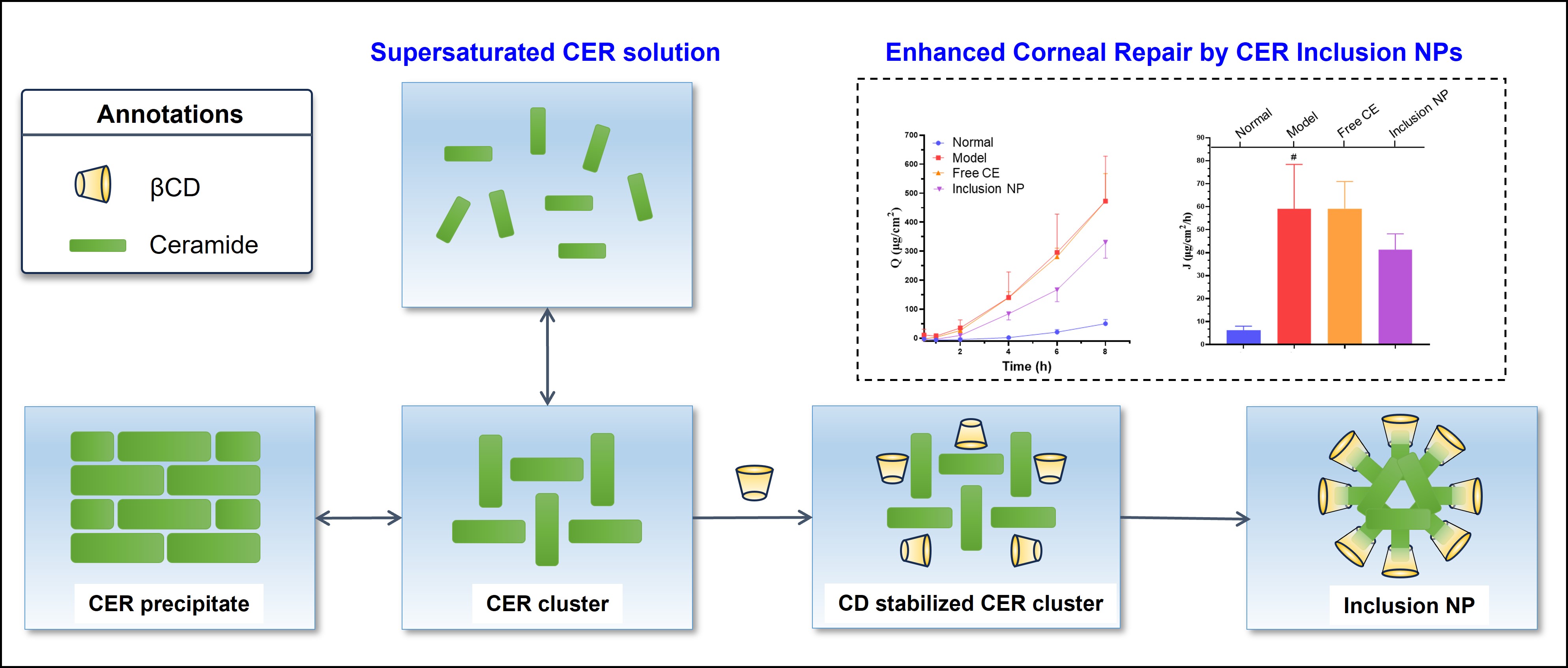
Self-assembling Ceramide 2-Cyclodextrin Inclusion Nanoparticles for Corneal Repair
Y. T. Yan, Lin Liu, X. F. Lin, Y. X. Wei, H. H. Ren, W. Wang, X. J. He, X. M. Li, E. G. Liu
Том 86 №4
357 просмотров;
Ceramide 2 is the main lipid of stratum corneum and a popular component in skin healthcare products. But developing ceramide 2 based corneal protecting product is troublesome due to its insoluble feature in water. In this work, a novel type of inclusion nanoparticle was developed to solubilize and enhance the corneal repair effect of ceramide 2 by the anti-solvent method. It was revealed that the types of solvent types and cyclodextrin influenced the precipitation rate as well as the stability of intermediate clusters of ceramide 2, where DMSO with moderate supersaturation promoted the formation of inclusion complex with β-cyclodextrins. The ceramide-cyclodextrin inclusion complex had an amphiphilic structure, which could self-assemble into nanoparticles in water, as evidenced by disappeared endothermic peaks of ceramide (78°C) and cyclodextrin (120°C), as well as appearance of two endothermic peaks corresponding to nanoparticle transition (45°C) and dissociation of cyclodextrin inclusion complex (102°C). Upon treating rat damaged skins with ceramide 2 inclusion nanoparticles, the cumulative permeation of indomethacin (IND, a model drug for skin permeability) were found to be 330.80 ± 54.86 μg/cm², which was significantly lower than the control group (472.47 ± 154.83 μg/cm²). In comparison, water suspensions of ceramide 2 showed no corneal repair effect.